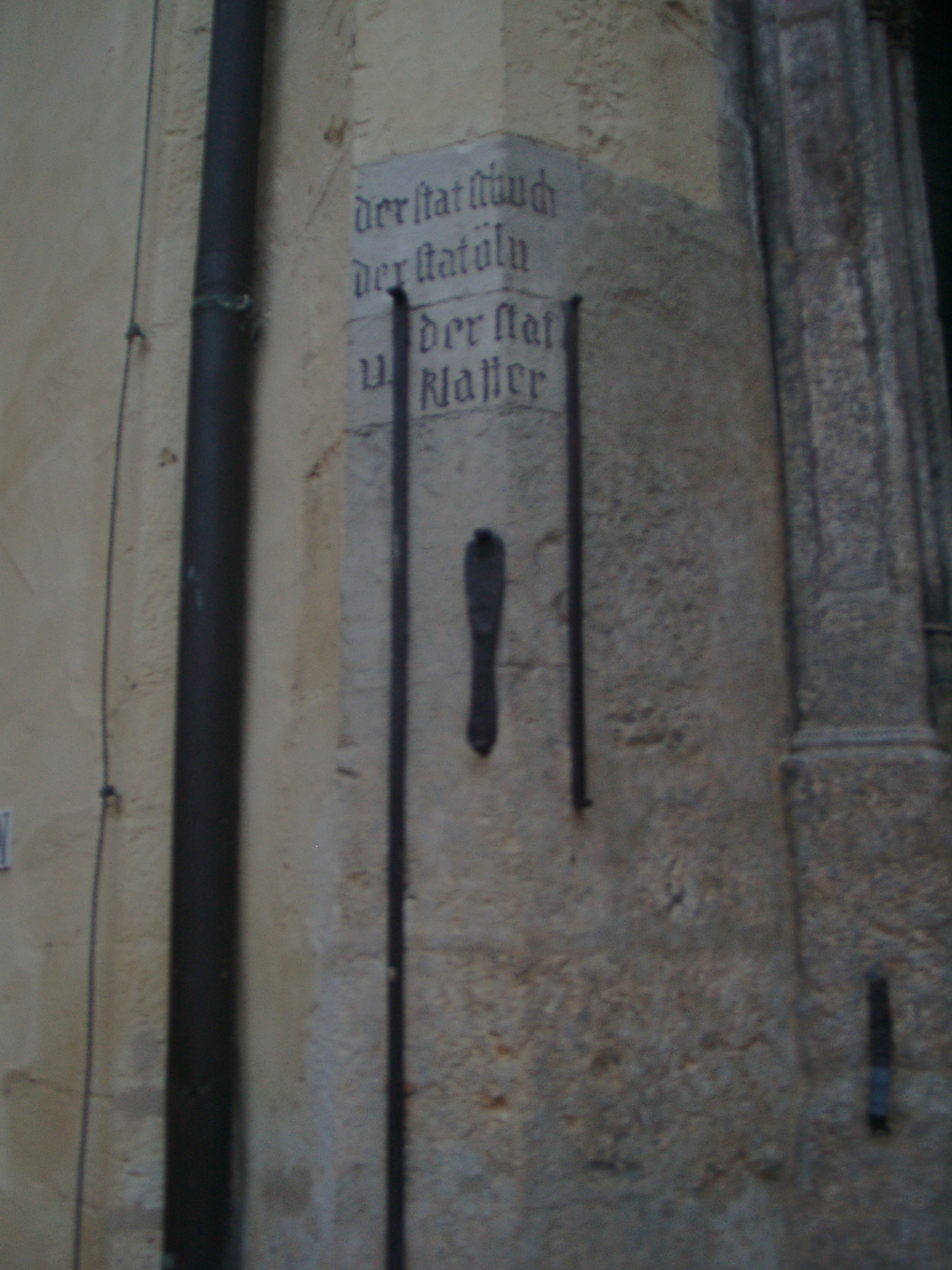Measuring sticks like these are still in use today for measuring the cloth off the bolts. The "ells" that are the basic unit for these measuring sticks are in some cases still marked out on a medieval church wall or the town hall, since the exact length of the ell could differ from region to region.

An ell stick would be easy to make: Take a suitable piece of wood, walk out to the town hall and mark the length of the local ell on your stick. Use this for measuring cloth - it is very handy. You could, of course, bring a piece of string instead of a piece of wood and mark the ell on the string, but for measuring out a piece of fabric to cut from a bolt, the ell stick beats the string hands down - much faster and easier to use. Plus you won't get a knot into the stick by accident.
There is no scarcity of evidence that cloth was measured in ells, and it is pretty logical that the ell would be divided into half, quarter ell etcetera. The markings on the ell stick of one of the pictures linked by Piia look to me like they might mark eigths of an ell. But that does not mean it is similar to a modern scaled measuring tape.
One difference between the ell stick, maybe divided up in half, quarters etcetera and a cm- or inch-scaled tape are the starting units. With the measuring stick, you'd start with the ell as base unit, while a modern tape uses inch or cm. The small modern units are just counted up and up - 25 inch, 135 cm - while the larger ell as base unit gets divided. However, there is a limit to how much dividing is useful. Half an ell? Surely. Quarter? Yes. Eighth of an ell? Will still work. A sixteenth? Hmm... that is already getting pretty small, and quite hard to count. But with a thirtytwoth of an ell, at the latest, your stick is going to have so many markings that it will be not too easy to handle anymore. And such small unit divisions might not be necessary - after all, when you buy cloth in a modern store, you usually buy in half meter increments. If you'd need really small units, you could switch to inches (or "fingers" or whatever is in use in your region) and have a conversion into ells, like feet make a yard and inch make a foot in the British measuring system.
Today, we have a centimeter or inch scale, with the unit meaning the same everywhere - so if I tell you "24 inch", you know exactly how long my thing is. This - together with high-precision printing and plastic materials - makes it easy to produce measuring tapes suitable for everybody and withstanding lots of use.
For the middle ages, this is not the case - there is no common unit of the same length everywhere. So if I told you "one ell", that could mean anything between about 40 cm and more than one metre, depending on what ell I'd use (though most are somewhere between 45 and 70 cm in length). Add to that the fact that textile bands used for measuring might stretch over time, and the fact that taking a measurement and writing down the number is almost surely a very modern way of doing it: You could also mark the length measured on a string or band or strip of whatever else you are using for measuring each client, and then keep the marked-up string for using on your project and maybe for future reference. So there might not have been any need to make a measuring tape like we are relying on today.





2 comments:
Very interesting post, and I agree with you completely. I shouldn't have used the word measuring tape thought, but rather a scaled stick.
I pointed out the pictures because I somehow understood from the previous post, that you were saying there weren't any kind of (however vaguely) scaled measuring devices used during the Middle Ages. :D
Piia, sorry I misunderstood your intention. There have been measuring units in use in the Middle Ages, and I'm sorry if my text suggested otherwise. But it has been different from today, where we can all rely on an inch being the same inch in Dublin and in Broadstairs, and a centimeter being the same length in Copenhagen as in Madrid. We're used to absolute measurements, while in the Middle Ages you'd need to check how much one local measurement differs from another one. So maybe I should have said there were no universally valid scaled measuring devices, but surely the division of, say, local ell measurements in halves, quarters, etcetera.
This difference was what I wanted to make clear.
Post a Comment